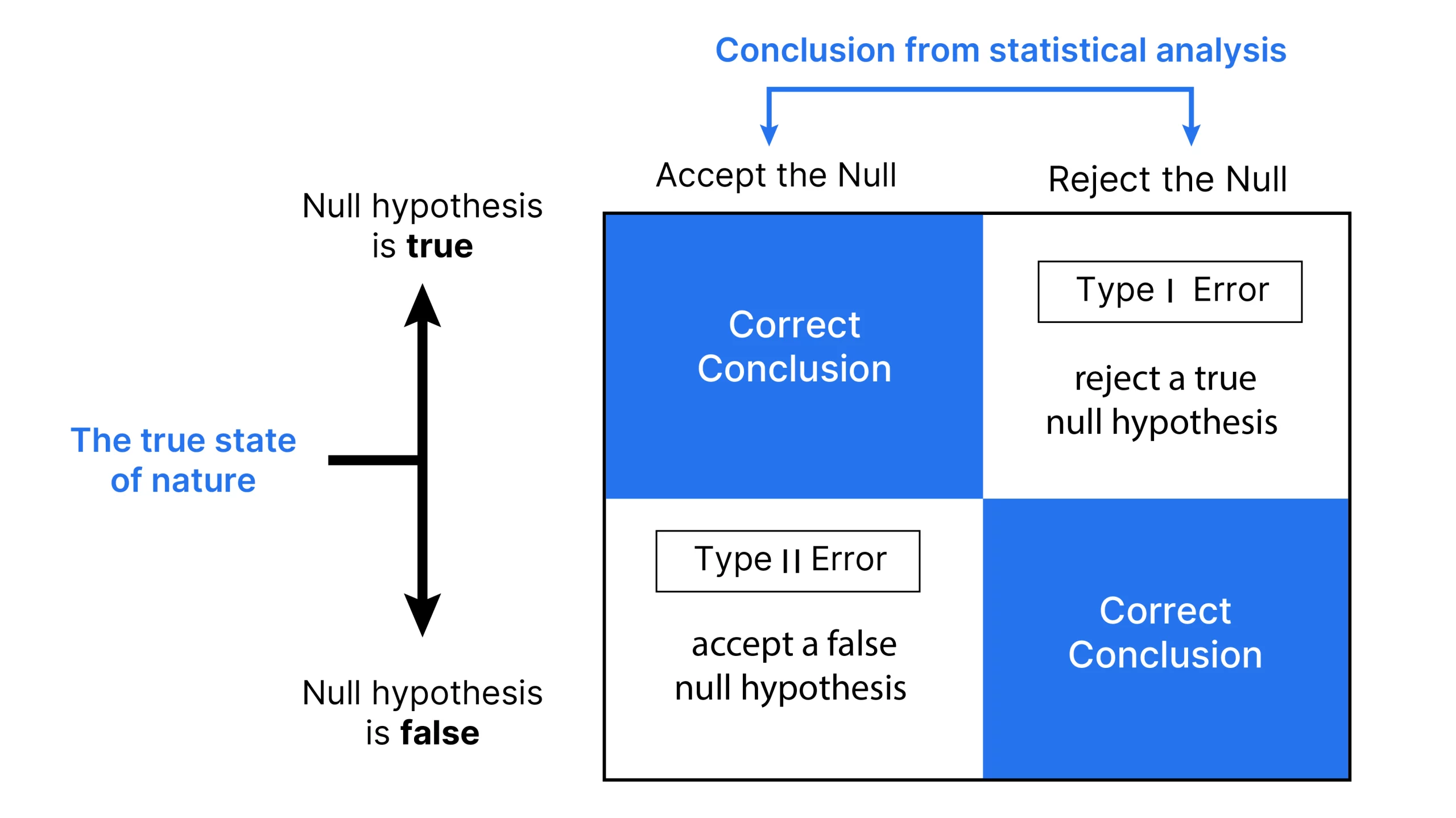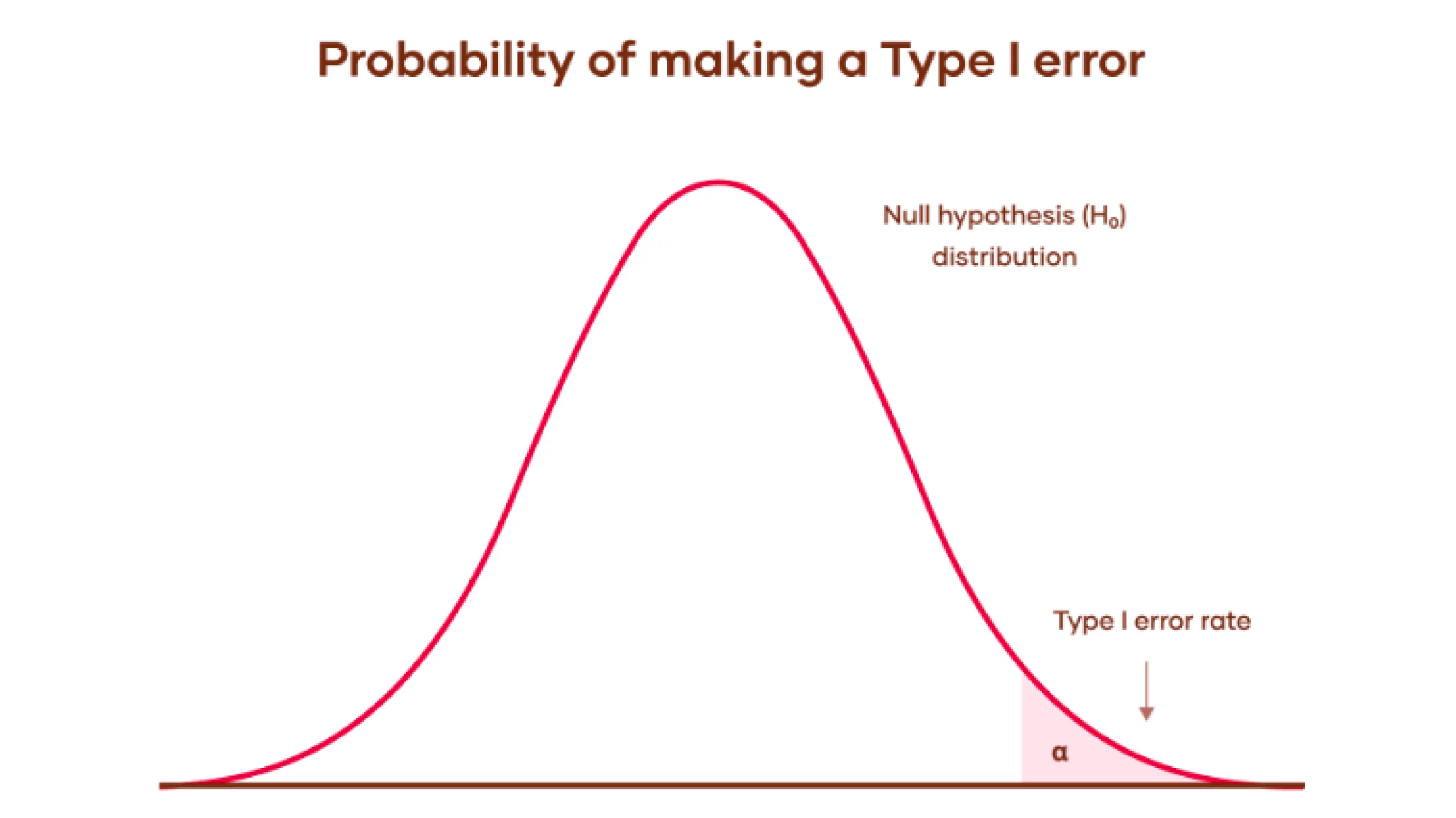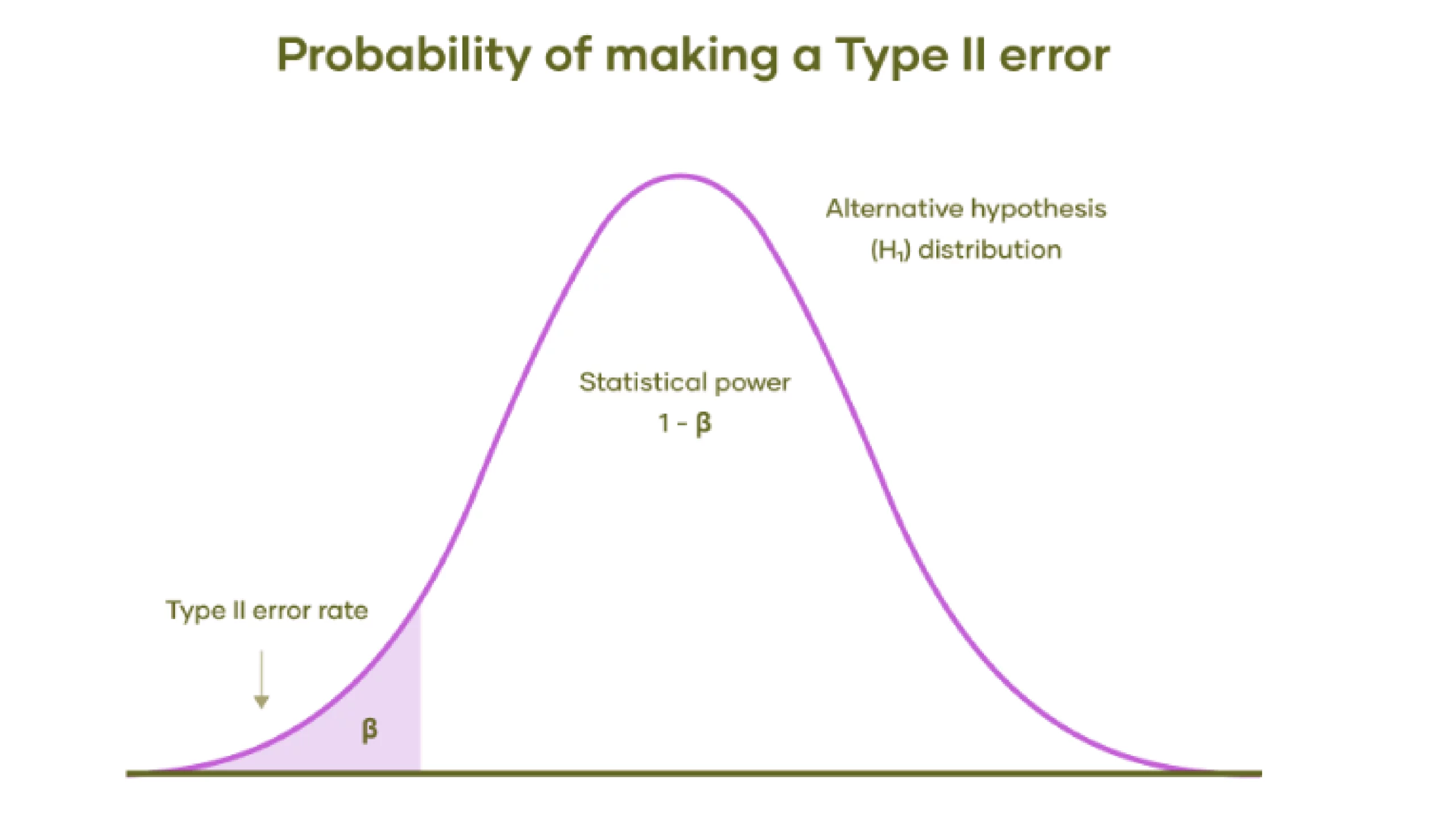 Technology peripherals
Technology peripherals
 AI
AI
 What's the Difference Between Type I and Type II Errors ? - Analytics Vidhya
What's the Difference Between Type I and Type II Errors ? - Analytics Vidhya
What's the Difference Between Type I and Type II Errors ? - Analytics Vidhya
Apr 18, 2025 am 09:48 AMUnderstanding Type I and Type II Errors in Statistical Hypothesis Testing
Imagine a clinical trial testing a new blood pressure medication. The trial concludes the drug significantly lowers blood pressure, but in reality, it doesn't. This is a Type I error – a false positive. Conversely, if the drug does lower blood pressure, but the trial fails to detect this due to limitations like a small sample size, that's a Type II error – a false negative.
These examples illustrate the critical role of Type I and Type II errors in statistical analysis. Type I errors (false positives) occur when a true null hypothesis (e.g., "the drug has no effect") is incorrectly rejected. Type II errors (false negatives) occur when a false null hypothesis is not rejected. While completely eliminating both is statistically impossible, understanding them is crucial for informed decision-making across various fields.

Key Concepts:
- Type I and Type II errors represent false positives and false negatives in hypothesis testing.
- Hypothesis testing involves formulating null and alternative hypotheses, selecting a significance level (alpha), calculating test statistics, and making decisions based on critical values.
- Type I errors lead to unnecessary actions (e.g., prescribing an ineffective drug).
- Type II errors lead to missed opportunities (e.g., failing to identify an effective treatment).
- Balancing Type I and Type II errors involves managing the significance level, sample size, and test power.
Table of Contents:
- The Fundamentals of Hypothesis Testing
- Type I Error (False Positive)
- Type II Error (False Negative)
- Comparing Type I and Type II Errors
- The Trade-off Between Type I and Type II Errors
- Frequently Asked Questions
The Fundamentals of Hypothesis Testing:
Hypothesis testing determines if there's enough evidence to reject a null hypothesis (H?) in favor of an alternative hypothesis (H?). The steps are:
- Formulating Hypotheses: H? (no effect/difference) and H? (an effect/difference exists).
- Choosing a Significance Level (α): The probability threshold for rejecting H? (often 0.05, 0.01, or 0.10).
- Calculating the Test Statistic: A value from sample data compared to a critical value.
- Making a Decision: Reject H? if the test statistic exceeds the critical value; otherwise, fail to reject H?.

Type I Error (False Positive):
A Type I error occurs when a true null hypothesis is wrongly rejected. In a medical context, this is a false positive diagnosis. The probability of a Type I error is α (alpha), the significance level. A common α is 0.05, meaning there's a 5% chance of a false positive.

Type II Error (False Negative):
A Type II error occurs when a false null hypothesis is not rejected. In a medical context, this is a missed diagnosis. The probability of a Type II error is β (beta). The power of a test (1-β) represents the probability of correctly rejecting a false null hypothesis.

Comparing Type I and Type II Errors:
| Feature | Type I Error | Type II Error |
|---|---|---|
| Definition | Rejecting a true null hypothesis | Failing to reject a false null hypothesis |
| Terminology | False positive | False negative |
| Probability | α (alpha) | β (beta) |
| Consequence | Unnecessary actions | Missed opportunities |
| Reduction Strategies | Lower α (increases β) | Higher α (increases α), larger sample size |
The Trade-off Between Type I and Type II Errors:
There's an inverse relationship between Type I and Type II errors. Reducing one often increases the other. Larger sample sizes and increased test power can help mitigate both.
Frequently Asked Questions:
- Q: Can both errors be completely avoided? A: No, there's always a risk of both. The goal is to minimize them to acceptable levels.
- Q: What are common misconceptions? A: A lower α doesn't always mean a better test; large sample sizes don't eliminate errors; statistical significance doesn't equal practical significance.
- Q: How can test power be increased? A: Increase sample size, improve measurement precision, reduce variability, or increase the effect size (if possible).
- Q: What's the role of pilot studies? A: Pilot studies help estimate parameters for larger studies, improving the balance between Type I and Type II errors.
The above is the detailed content of What's the Difference Between Type I and Type II Errors ? - Analytics Vidhya. For more information, please follow other related articles on the PHP Chinese website!

Hot AI Tools

Undress AI Tool
Undress images for free

Undresser.AI Undress
AI-powered app for creating realistic nude photos

AI Clothes Remover
Online AI tool for removing clothes from photos.

Clothoff.io
AI clothes remover

Video Face Swap
Swap faces in any video effortlessly with our completely free AI face swap tool!

Hot Article

Hot Tools

Notepad++7.3.1
Easy-to-use and free code editor

SublimeText3 Chinese version
Chinese version, very easy to use

Zend Studio 13.0.1
Powerful PHP integrated development environment

Dreamweaver CS6
Visual web development tools

SublimeText3 Mac version
God-level code editing software (SublimeText3)
 Kimi K2: The Most Powerful Open-Source Agentic Model
Jul 12, 2025 am 09:16 AM
Kimi K2: The Most Powerful Open-Source Agentic Model
Jul 12, 2025 am 09:16 AM
Remember the flood of open-source Chinese models that disrupted the GenAI industry earlier this year? While DeepSeek took most of the headlines, Kimi K1.5 was one of the prominent names in the list. And the model was quite cool.
 Grok 4 vs Claude 4: Which is Better?
Jul 12, 2025 am 09:37 AM
Grok 4 vs Claude 4: Which is Better?
Jul 12, 2025 am 09:37 AM
By mid-2025, the AI “arms race” is heating up, and xAI and Anthropic have both released their flagship models, Grok 4 and Claude 4. These two models are at opposite ends of the design philosophy and deployment platform, yet they
 10 Amazing Humanoid Robots Already Walking Among Us Today
Jul 16, 2025 am 11:12 AM
10 Amazing Humanoid Robots Already Walking Among Us Today
Jul 16, 2025 am 11:12 AM
But we probably won’t have to wait even 10 years to see one. In fact, what could be considered the first wave of truly useful, human-like machines is already here. Recent years have seen a number of prototypes and production models stepping out of t
 Context Engineering is the 'New' Prompt Engineering
Jul 12, 2025 am 09:33 AM
Context Engineering is the 'New' Prompt Engineering
Jul 12, 2025 am 09:33 AM
Until the previous year, prompt engineering was regarded a crucial skill for interacting with large language models (LLMs). Recently, however, LLMs have significantly advanced in their reasoning and comprehension abilities. Naturally, our expectation
 What Are The 7 Types Of AI Agents?
Jul 11, 2025 am 11:08 AM
What Are The 7 Types Of AI Agents?
Jul 11, 2025 am 11:08 AM
Picture something sophisticated, such as an AI engine ready to give detailed feedback on a new clothing collection from Milan, or automatic market analysis for a business operating worldwide, or intelligent systems managing a large vehicle fleet.The
 Concealed Command Crisis: Researchers Game AI To Get Published
Jul 13, 2025 am 11:08 AM
Concealed Command Crisis: Researchers Game AI To Get Published
Jul 13, 2025 am 11:08 AM
Scientists have uncovered a clever yet alarming method to bypass the system. July 2025 marked the discovery of an elaborate strategy where researchers inserted invisible instructions into their academic submissions — these covert directives were tail
 United Nations Considering These Four Crucial Actions To Save The World From Dire AGI And Killer AI Superintelligence
Jul 13, 2025 am 11:09 AM
United Nations Considering These Four Crucial Actions To Save The World From Dire AGI And Killer AI Superintelligence
Jul 13, 2025 am 11:09 AM
Be aware that the United Nations has had an ongoing interest in how AI is advancing and what kinds of international multilateral arrangements and collaborations ought to be taking place (see my coverage at the link here). The distinctive element of t
 Grok 4 is Here and it's Simply Brilliant! - Analytics Vidhya
Jul 12, 2025 am 09:14 AM
Grok 4 is Here and it's Simply Brilliant! - Analytics Vidhya
Jul 12, 2025 am 09:14 AM
“It’s smarter than almost all graduate students in all disciplines – Elon Musk.” Elon Musk and his Grok team are back with their latest and best model to date: Grok 4. It was only 3 months ago that this team of e





